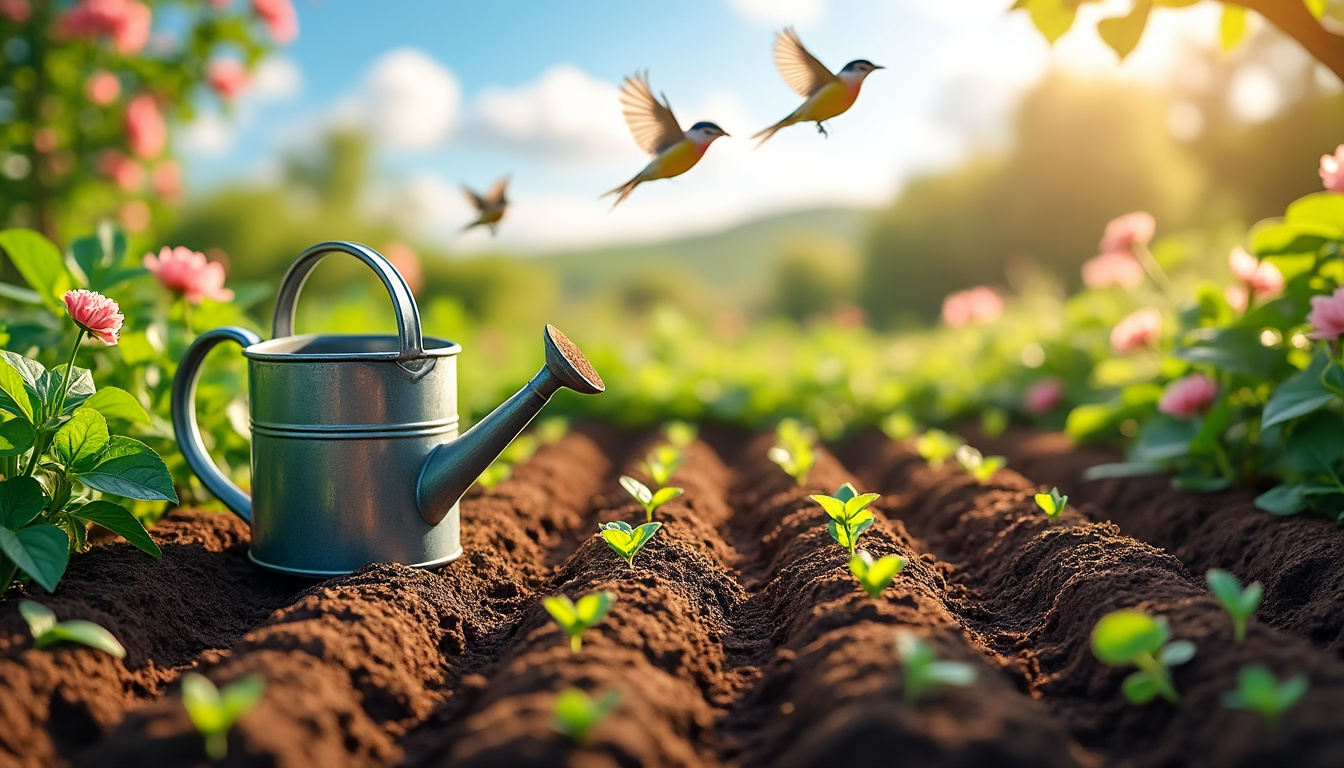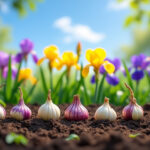Broad beans, known for their rich nutritional value and ease of cultivation, offer a rewarding gardening experience. Understanding the optimal planting times can significantly enhance the chances of a bountiful harvest. With their flexibility, these legumes can be sown either in spring or autumn, depending on the desired timing of the harvest. Insights into cultivating broad beans will delve into the specifics of each season, providing gardeners with the essential knowledge needed to reap the maximum benefits from their efforts.
Understanding Broad Bean Planting Times
When it comes to determining the best times to plant broad beans, one must consider various factors, including local climate and specific cultivar types. Generally, broad beans can thrive in two primary planting seasons: autumn and spring.
Autumn Planting
Autumn planting is ideal for those seeking an early crop. Ideally, seeds should be sown during September to November. This method allows plants to establish roots during the milder autumn months. Once temperatures drop, the plants will become dormant until spring arrives, promoting vigorous growth as the weather warms.
In regions with particularly harsh winters, choose hardier varieties such as Aquadulce Claudia and Masterpiece Green Longpod, which exhibit resilience and earlier maturity. Plants typically reach maturity in about 60 to 100 days, allowing for a harvest by late spring.
Spring Planting
Spring planting, which typically occurs from March to April, is another successful approach. This timing is perfect for those who want to avoid the risk of frost damaging young seedlings. By planting in early spring, gardeners can expect a continuous harvest throughout late spring into summer.
Popular choices for spring planting include Witkiem Manita, which is compact and high-yielding. For successful growth, ensure to plant seeds in well-drained soil once frost danger has passed, spacing them approximately 8-12 inches apart.
Optimal Conditions for Planting Broad Beans
To achieve the best results, it’s crucial to consider the environmental conditions when planting broad beans. These plants favor cool weather and ideally thrive in temperatures ranging from 55°F to 70°F (13°C to 21°C). Soil preparation plays an essential role in promoting healthy growth.
Soil Preparation
Broad beans flourish in well-draining soil enriched with organic matter. Preparing the soil involves removing existing weeds and debris, followed by incorporating compost or well-rotted manure. An optimal soil pH level between 6.0 and 7.0 contributes to their successful growth.
Applying a balanced organic fertilizer before sowing can also enhance soil fertility, ensuring that plants receive essential nutrients crucial for early growth.
How to Sow Broad Beans
Once the soil is prepared and the right timing is determined, the planting process begins:
- Spacing: Plant seeds in rows, leaving 20-30 cm between each plant and 60 cm between rows to allow ample sunlight and air circulation.
- Depth: Sow the seeds about 5-8 cm deep, adjusting for heavier soils where shallower planting might be more suitable.
- Watering: Water the soil thoroughly after planting to maintain consistent moisture, which is vital for seed germination.
Caring for Broad Bean Plants
Proper care after planting is essential for a successful harvest. Broad beans require minimal maintenance but benefit from regular attention:
Watering and Fertilizing
Providing around 1 inch (2.5 cm) of water weekly adequately nurtures the plants, particularly during flowering and pod development. Mulching around the plants helps retain soil moisture and suppress weeds.
As nitrogen-fixing plants, broad beans typically do not need excessive nitrogen fertilizer. However, if nutrient deficiencies appear evident, applying a balanced organic fertilizer may prove beneficial.
Pest and Disease Control
While broad beans are generally resilient, vigilance against common pests is vital. Aphids and blackfly can affect plant health, requiring regular inspections. Organic pest control methods, like insecticidal soap, can be effective in maintaining healthy plants.
Harvesting Broad Beans
Recognizing the right moment to harvest broad beans can directly impact the quality of the produce. Harvesting should occur when pods are firm, fully developed, and tender. Typically, this is when pods reach about 10-15 cm in length.
To gather beans, gently snap the pods off the plant, ensuring minimal damage to the stem. Fresh beans can be stored in the refrigerator for up to a week, maintaining their delightful taste.
When to plant iris bulbs for the best bloom results
Using Broad Beans in the Kitchen
Once harvested, broad beans offer an array of culinary possibilities. Their versatility shines through in various dishes, from salads to purees:
- Fresh & Steamed: Incorporate fresh or steamed beans into salads or as side dishes for grilled meats.
- Mashed: Blend cooked beans with garlic, lemon juice, and olive oil for a delightful dip or sandwich spread.
- Roasting: Roasting broad beans creates a nutritious snack packed with flavor.
Frequently Asked Questions
| Question | Answer |
|---|---|
| When is the best time to plant broad beans? | Broad beans are typically planted in autumn for early crops or in spring for consistent yields. |
| What cultivar is best for my garden? | Varieties such as Aquadulce Claudia and Masterpiece Green Longpod are popular choices for resilient crops. |
| How should I prepare my soil for planting? | Ensure a well-draining soil, rich in organic matter, with a pH between 6.0 and 7.0 for optimal growth. |
| Can I grow broad beans in containers? | Yes, choose containers at least 30 cm deep and wide, with a well-draining potting mix. |
| How long does it take for broad beans to mature? | Maturity can range from 60 to 100 days, depending on the cultivar. |
















